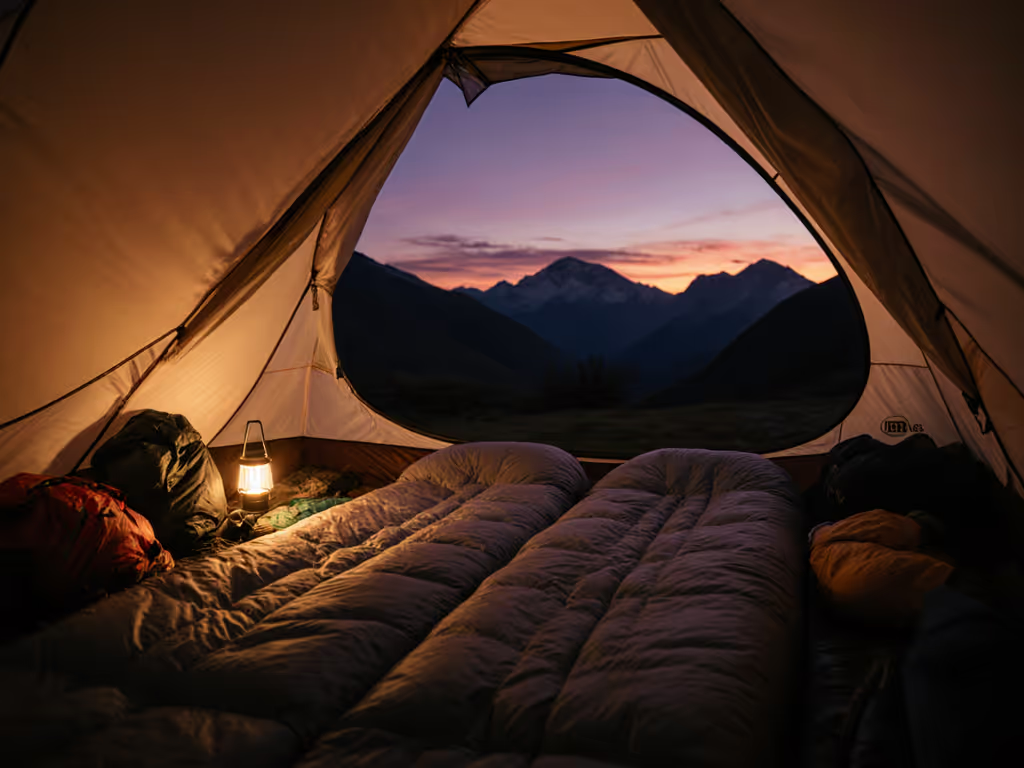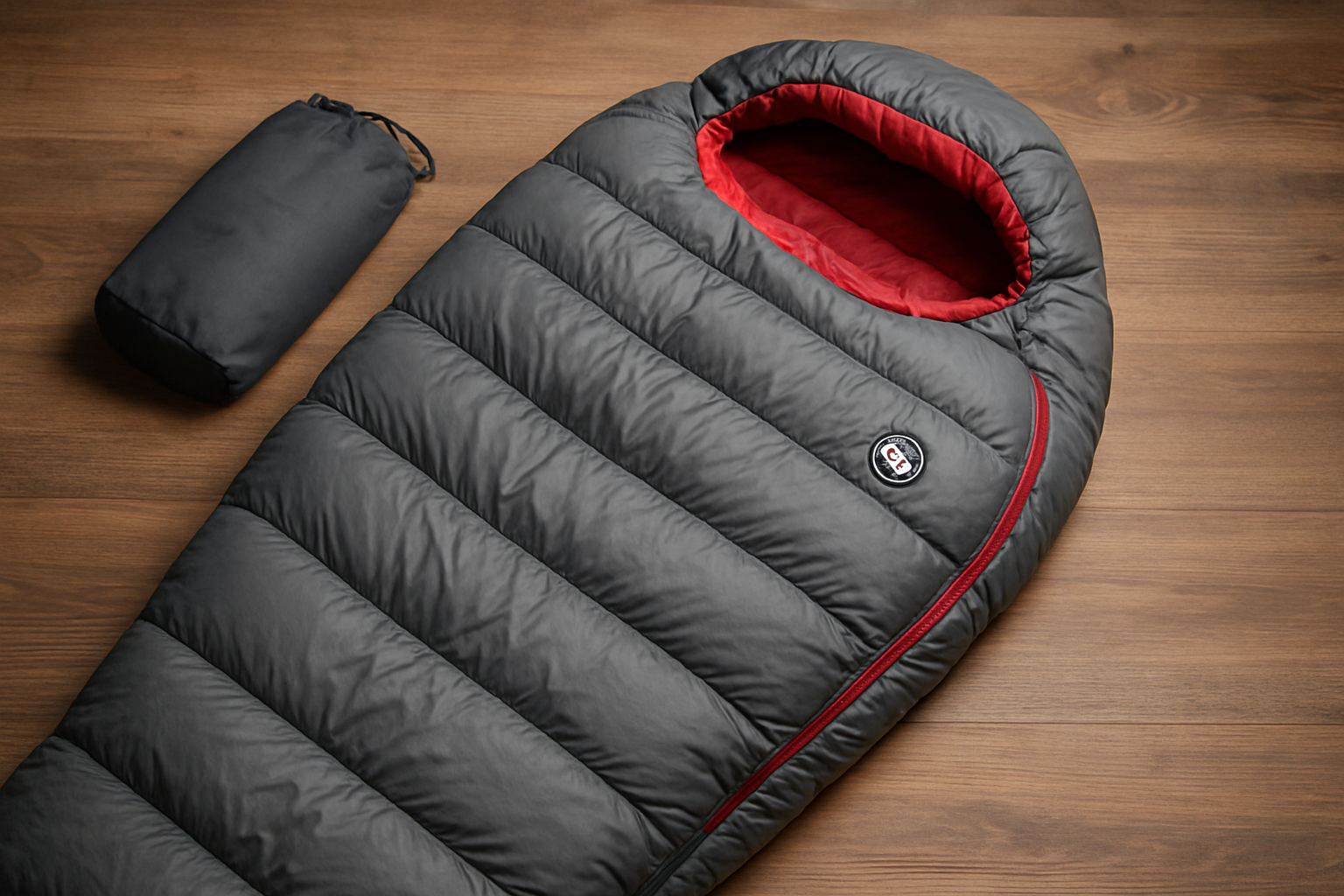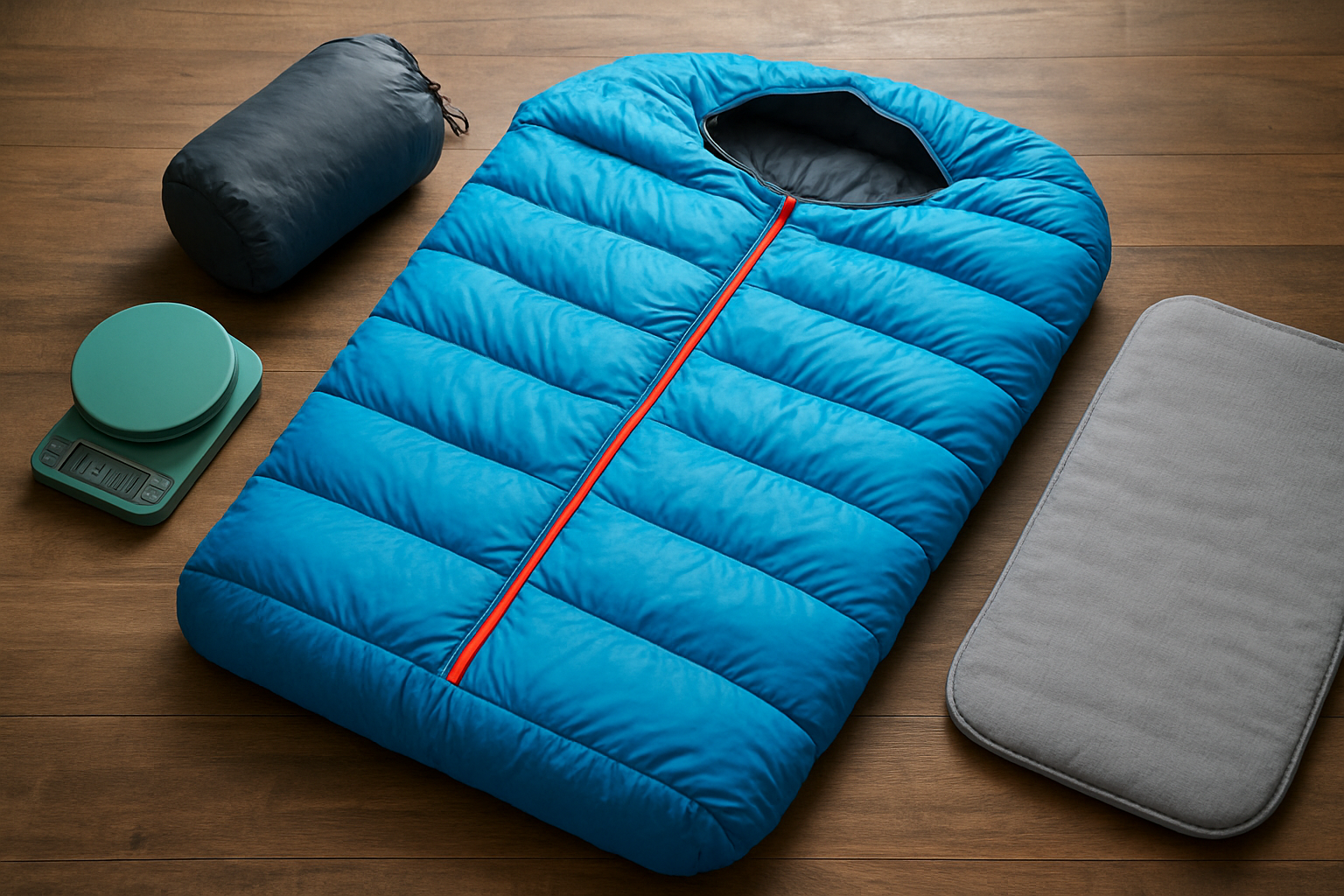Ultimate Big Agnes Cabin Creek 15 Double Sleeping Bag Review: Real-World Comfort, Warmth, and Backpacker Tips

You came for a no-nonsense big agnes cabin creek 15 double sleeping bag review, and you will leave with practical, general guidance that translates spec sheets into clearer choices for better sleep. Couples and co-sleeping partners often ask whether a double bag really keeps two people warm without turning into a drafty, heavy compromise. The short answer: it can, if the design, pad pairing, and fit match your conditions and sleeping style. In this comprehensive review, this article unpacks how the Cabin Creek 15’s synthetic insulation, roomy cut, and Flex Pad Sleeve combine with the right thermal resistance (R-value) pad strategy to deliver comfort from car camps to shoulder-season backpacking, while also covering sustainability considerations and long-term care.
Big Agnes Cabin Creek 15 Double Sleeping Bag Review: Who It Suits and When It Shines
The Cabin Creek 15 is purpose-built for two, and that purpose shows in the details that matter when temperatures dip. The rectangular, doublewide layout gives couples enough elbow room to change positions without twisting the bag, while twin hoods and draft collars let each sleeper fine-tune warmth without stealing heat or space. Dual, full-length zippers enable stealthy exits and quick ventilation, so one partner can cool off after a late-night campfire while the other stays cozy. Compared to zipping two single bags together—which often misaligns baffles and leaks heat—the integrated design feels like a proper sleep system, especially when the Flex Pad Sleeve wraps around your pads to eliminate midnight sliding and cold side gaps.
- Best for: Couples who value comfort and cohesion, car campers who want duvet-like roominess, and backpackers prioritizing warmth stability over ultralight minimalism.
- Works well in: Three-season shoulder temps, low-humidity nights near freezing, and trips where you can bring adequate thermal resistance (R-value) pads.
- Consider alternatives if: You need sub-20 ounce ultralight gear, plan high-humidity winter outings, or prefer individualized mummy-style thermals.
Specs, Materials, and Design Details that Matter
Big Agnes builds the Cabin Creek 15 with FireLine ECO synthetic insulation that uses recycled fibers, striking a balance between dependable warmth when damp and responsible materials. While down often wins the weight race, modern synthetic loft shines in variable humidity, because it retains more insulation value when condensation or tent drip creeps in. A water-shedding face fabric with a durable water repellent (DWR) finish adds surface protection, and many current versions move toward non-perfluorinated chemicals (PFCs) treatments to reduce environmental impact. Inside, the twin hood pockets can cradle a jacket to create stable pillows, and a central draft tube plus side draft collars help block convective heat loss when wind rattles your rainfly. The Flex Pad Sleeve deserves special praise: imagine a fitted sheet for pads, stretching to secure either two individual pads side-by-side or one doublewide pad, which is critical for eliminating the dreaded middle gap.
| Feature | Cabin Creek 15 | Why It Matters |
|---|---|---|
| Insulation | FireLine ECO synthetic (recycled) | More resilient in humidity; eco-friendlier fiber content |
| Pad Interface | Flex Pad Sleeve for 2 singles or 1 doublewide | Prevents pad drift and side drafts for consistent warmth |
| Zippers | Dual, full-length with anti-snag design | Independent entry and venting for each partner |
| Draft Control | Center draft tube, twin draft collars | Minimizes convective heat loss and cold spots |
| Hood Design | Two separate hoods with cinches | Customizable seal and comfort for different sleepers |
| Shell and Liner | Polyester with DWR; soft-touch liner | Balance of durability, splash resistance, and feel |
Lab Ratings vs Real-World Warmth: Translating International Organization for Standardization (ISO) Numbers

Many shoppers struggle to interpret International Organization for Standardization (ISO) 23537 ratings because the numbers read like precision, yet your night outdoors adds variables a lab cannot capture. The comfort rating approximates how a cold sleeper might feel, while the limit rating targets a warm sleeper wearing a base layer, and the extreme number is a survival metric you should never normalize. Real conditions layer on wind, humidity, shelter type, clothing, metabolism, and—often most important—the thermal resistance (R-value) of your sleeping pad. Industry tests commonly show that up to one third of your system’s heat loss routes to the ground without an adequate pad, which is why Backpacker Sleep emphasizes pairing the Cabin Creek 15 with the right pad stack. If you camp near freezing with two average sleepers, aim for combined pad thermal resistance (R-value) around 4.5 to 5.5; colder sleepers or wind-exposed sites may need higher.
Recommended Pad Thermal Resistance (R-value) Pairings for Two Sleepers
| Overnight Low | Typical Pairing | Notes |
|---|---|---|
| 40 to 50 F (4 to 10 C) | 3.0 to 4.0 combined thermal resistance (R-value) | Great for late spring/early fall, ventilate zips as needed |
| 30 to 40 F (-1 to 4 C) | 4.5 to 5.5 combined thermal resistance (R-value) | Shoulder season baseline for average sleepers |
| 20 to 30 F (-6 to -1 C) | 5.5 to 6.5+ combined thermal resistance (R-value) | Stack a closed-cell pad under insulated air pads |
| Below 20 F (-6 C) | 6.5 to 7.5+ combined thermal resistance (R-value) | Consider a warmer bag or add liners and draft management |
Here is where Backpacker Sleep’s methodology helps. This review translates the International Organization for Standardization (ISO) comfort and limit figures into a simple, system-first approach: match bag rating to the coldest expected low, then explains how to tune pads, clothing, and ventilation for factors such as metabolism and humidity. The review also stresses fit, because unused air volume inside any double bag increases heating demand, especially for smaller partners. Practical rule: if your toes are not keeping the footbox warm after 10 minutes, add socks or a liner, and verify that pad edges reach the bag’s side baffles to seal drafts. Finally, remember that synthetic fills like FireLine ECO lose less loft than down on damp nights, so if you expect condensation-heavy mornings, this bag’s insulation choice is an advantage.
Field Test Stories: Couples, Tall Campers, and Shoulder-Season Trips
On a blustery October weekend with lows around 33 F (about 1 C), two testers used the Cabin Creek 15 with a doublewide insulated air pad and a thin closed-cell foam underlay for a combined thermal resistance (R-value) near 5.5. One partner slept hot and kept the side zip vented to the knee, while the other tightened the hood and draft collar; both woke warm with no cold hip spots, a credit to the pad sleeve keeping foam aligned under the baffles. On a different trip, a 6 ft 3 in (190 cm) camper appreciated that the rectangular cut did not clamp down on shoulders like a tight mummy, yet the twin hoods still cinched enough to stop heat leaking. Pairs with a size or metabolism mismatch will like the freedom to micro-adjust without fighting a single shared hood or zipper.
- Pro tip: Use the hood pockets as pillow sleeves to stop midnight slippage, or stuff them with spare fleece for extra loft at the neck.
- Draft defense: Before sleep, run your hand along the center draft tube to verify it sits upright rather than folded, especially after partner movement.
- Moisture management: Crack the top zipper two finger-widths to vent exhaled moisture and protect loft during clear, cold nights.
- Couples comfort: Offset two individual pads so seams do not align with the bag’s centerline, reducing any perceivable ridge under the spine.
Weight, Packed Size, and Pad Compatibility: The Comfort-Per-Ounce Equation

Double bags are rarely the lightest route for mileage-obsessed trips, but the Cabin Creek 15 earns its spot by simplifying sleep for two people without bringing two separate hoods, zippers, bags, and liners. You will carry a bit more mass than an ultralight pair of singles, yet you gain fewer components, faster camp setup, and genuinely better draft control for co-sleepers. The Flex Pad Sleeve supports either two individual 20 to 25 inch (51 to 64 cm) pads side-by-side or a single doublewide pad, making this bag adaptable to whatever you already own. If you are backpacking, consider splitting the system: one person carries the bag, the other carries the pad setup and shelter poles, evening out pack weights.
- Packing strategy: Store the bag loose at home to preserve loft, but compress in a lightweight dry bag on trail days to manage volume and moisture.
- Pad synergy: For shoulder season, pair an insulated air pad with a thin closed-cell foam pad to boost total thermal resistance (R-value) without ballooning weight.
- Vent agility: In warmer stretches, leave the top third unzipped for blanket-mode comfort; the rectangular cut drapes naturally like a quilt.
- Cold insurance: Bring a compact liner to add roughly 5 to 10 F (3 to 6 C) of perceived warmth for colder sleepers without changing the core system.
Sustainability and Care: Make It Last, Tread Lighter
Backpacker Sleep highlights eco-forward choices not as marketing extras, but as indicators of responsible, durable gear. The Cabin Creek 15’s FireLine ECO recycled synthetic insulation reduces virgin material use without sacrificing resilience in damp conditions, and modern fabric finishes often use non-perfluorinated chemicals (PFCs) for durable water repellent (DWR) performance. Extend the bag’s life by washing sparingly with a technical cleanser, tumble-drying low with clean tennis balls to restore loft, and air-drying fully before storage. Store loosely in a breathable sack rather than compressed to protect fibers and baffle structure. If you camp in high-condensation regions, wipe the liner each morning, crack the zippers to air out during breakfast, and reapply a PFC-free durable water repellent (DWR) treatment when water stops beading on the shell.
Care and Sustainability Checklist
| Action | Benefit | When to Do It |
|---|---|---|
| Loose, dry storage | Preserves loft and baffle integrity | After every trip, once fully dry |
| Gentle wash and low-heat dry | Removes oils that reduce loft | When loft looks tired or smells persist |
| Reapply PFC-free durable water repellent (DWR) | Restores surface beading, reduces wet-out | When water no longer beads on the shell |
| Pad-first warmth planning | Cuts ground heat loss and energy use | Before cold-weather itineraries |
How Backpacker Sleep Helps You Choose With Confidence
Many backpackers get lost in alphabet soup and conflicting anecdotes, so Backpacker Sleep exists to bridge lab data and trail reality. Backpacker Sleep translates International Organization for Standardization (ISO) lab ratings into plain-language warmth ranges, then explains how to tune your system with fit, clothing, and pad thermal resistance (R-value) so you can avoid common warmth issues and carry only what you need. Our comprehensive reviews on sleeping bags for various conditions highlight differences between synthetic and down insulation in humidity, explain when recycled fills make sense, and demystify features like draft tubes, zipper guards, and hood geometry. The result is clarity: you can look at the Cabin Creek 15, your climate, and your partner’s sleep style, and decide if the weight-to-comfort trade is right for your trips.
- Clear translations of lab numbers into real-world advice for couples and co-sleepers.
- Comparisons of down vs synthetic for damp valleys, alpine nights, and desert swings.
- Actionable tips on fit, pad pairing, and humidity management to keep loft alive.
- Focus on eco-friendly materials that extend performance and reduce footprint.
This guide promised a grounded view of comfort, warmth, and usability, and the Cabin Creek 15 proves that a double bag can deliver dependable sleep for two with smart pad pairing and draft control. Imagine planning your next shoulder-season loop knowing that your bag, pads, and venting plan fit you and your partner's needs, with no guesswork about ratings or moisture. What would change about your route, your start time, or your confidence if your sleep system felt as dialed as your pack and shoes?
If you are ready to apply the same clarity to your own kit, you now know how to read ratings, match pads, and weigh eco trade-offs while staying comfortable. For a deeper big agnes cabin creek 15 double sleeping bag review plus side-by-side comparisons and pad calculators, keep reading below.
Additional Resources
Explore these authoritative resources to dive deeper into big agnes cabin creek 15 double sleeping bag review.
- Big Agnes double sleeping bags : r/CampingGear - Reddit
- Big Agnes Cabin Creek 15 Degree Doublewide Sleeping Bag
Elevate Your Big Agnes Cabin Creek 15 Review Journey with Backpacker Sleep
Backpacker Sleep gives practical ISO and lab rating explanations with real-world fit, insulation, and eco guidance so backpackers, hikers, and camping enthusiasts make confident, comfortable sleeping bag choices.
